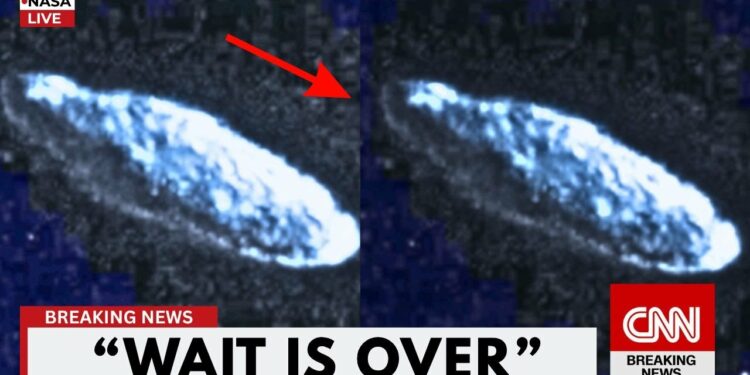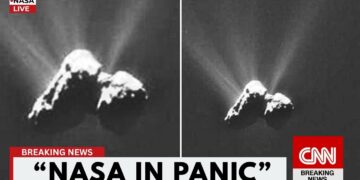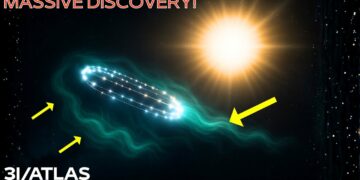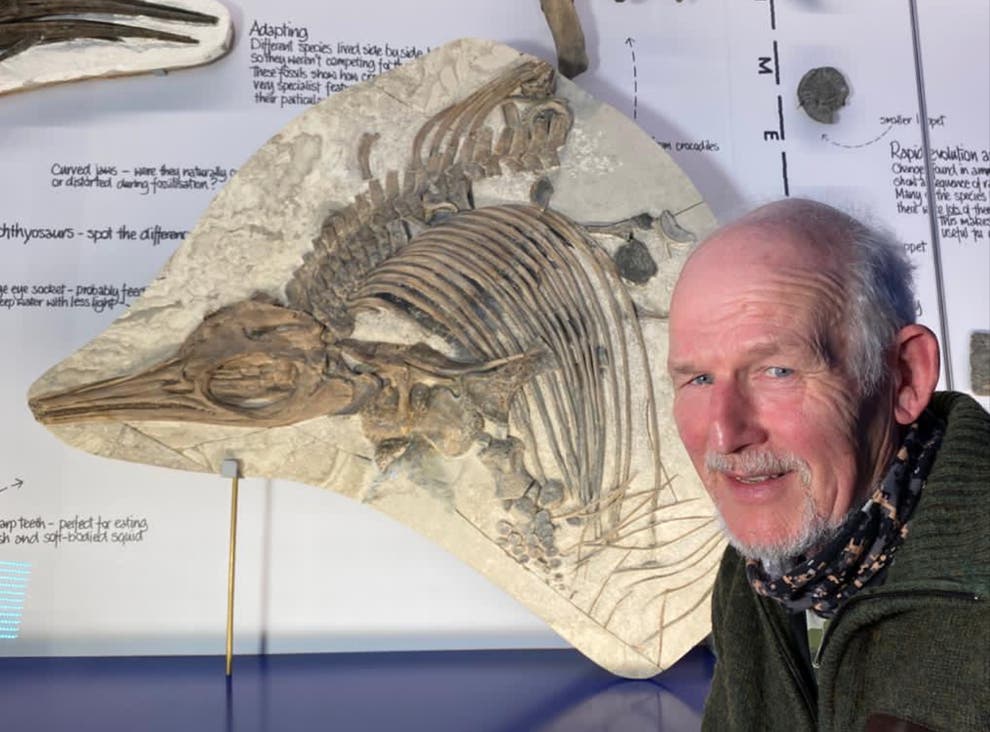New images of Three Atlas, the third confirmed interstellar object observed from Earth, reveal a phenomenon that defies our understanding of comets and cosmic visitors. Racing through our solar system, this mysterious object is surrounded by a massive, blood-red cloud stretching thousands of miles, unlike anything astronomers have seen before. At its core lies Three Atlas, an interstellar enigma that challenges conventional science.
A Crimson Anomaly
Unlike typical comets with glowing tails and bright heads, Three Atlas presents a monstrous, deep crimson coma—a vast cloud of gas and dust obscuring a nucleus barely visible to telescopes. This eerie red halo, spanning over 90,000 miles, could encompass more than ten Earths. Spectrographic analysis reveals an astonishing composition: nearly pure carbon dioxide (CO2), venting at a staggering rate of 70 kilograms per second, equivalent to an industrial smokestack in space. Yet, despite this immense outgassing, Three Atlas lacks a visible tail, defying the expected behavior of comets, which typically form tails as solar heat sublimates their ices.
A Cosmic Puzzle
The absence of a tail and the sheer scale of the CO2 emission overturn traditional models of cometary physics. Comets typically produce a coma and tail through sublimation, but Three Atlas generates only the coma, leaving a lingering, ghostly red cloud. Initial estimates suggested a small nucleus, a few miles across, but new data from NASA’s SPHEREx telescope indicates a far larger core, potentially 46 kilometers (28 miles) in diameter—a small world shrouded in a bizarre, bloody fog. This object, too large, too red, and too faint for its size, resists classification as a simple comet.
A Disappointing Spectacle
When first detected beyond Saturn’s orbit, Three Atlas promised to be a celestial event of the century. Its trajectory suggested a close solar approach, potentially making it visible to the naked eye. However, as it neared the sun, its behavior became erratic—flaring unpredictably, dimming suddenly, and shifting in color and shape. Instead of a brilliant display, the object fragmented, breaking into smaller pieces that continued to travel together, each sprouting its own miniature coma. This unexpected breakup, followed by a delayed release of data, sparked suspicion among researchers. The eventual revelation of the massive CO2 cloud and its crimson hue transformed Three Atlas from a failed spectacle into a profound cosmic mystery.
An Interstellar Origin
Three Atlas follows a hyperbolic trajectory, meaning it is not bound to our sun and will exit the solar system after its visit. Originating from interstellar space, it carries clues about a distant star system. Unlike typical comets, which retain stable materials like water ice after long journeys, Three Atlas’s CO2-dominated composition suggests it formed in an exceptionally cold environment, possibly a fragment of a Pluto-like exoplanet or a unique comet from a CO2-rich region. Its preservation over millions of years raises questions about its structure—perhaps a porous, sponge-like nucleus or a mechanically complex object.
Unsettling Implications
The James Webb Space Telescope’s observations deepen the enigma. Three Atlas exhibits slight, non-gravitational acceleration, unexplained by outgassing or solar radiation. Its surface, highly reflective and possibly metallic, shows absorption lines suggesting advanced carbon structures, hinting at a manufactured origin. Symmetry in its spin and internal complexity further challenge natural explanations. As data updates slowed and agencies like NASA and ESA restricted access, speculation grew: could Three Atlas be an artificial probe, a relic from an advanced civilization? Harvard astrophysicist Avi Loeb suggests it may exhibit intentional behavior, similar to the anomalous 2017 object ‘Oumuamua.
A Cosmic Test?
Three Atlas’s arrival coincides with humanity’s advancing technology, raising chilling possibilities. Is its timing a coincidence, or is it a deliberate signal, activated as our telescopes and AI grow sophisticated enough to notice? The object’s precision, silence, and anomalies suggest it might be observing us, part of a cosmic experiment to test our readiness for contact. As we study its trajectory, thermal signature, and composition, we must confront an unsettling question: are we the observers, or are we the observed?
Conclusion
Three Atlas is not just a celestial oddity; it is a challenge to our understanding of the cosmos. Its blood-red coma, massive nucleus, and inexplicable behavior force us to reconsider what interstellar visitors can be. Whether a natural relic or an artificial construct, it carries a message from the void—one we may not yet be ready to decipher. As the James Webb Space Telescope continues its watch, Three Atlas reminds us that the universe is far stranger, and perhaps far less lonely, than we ever imagined.























